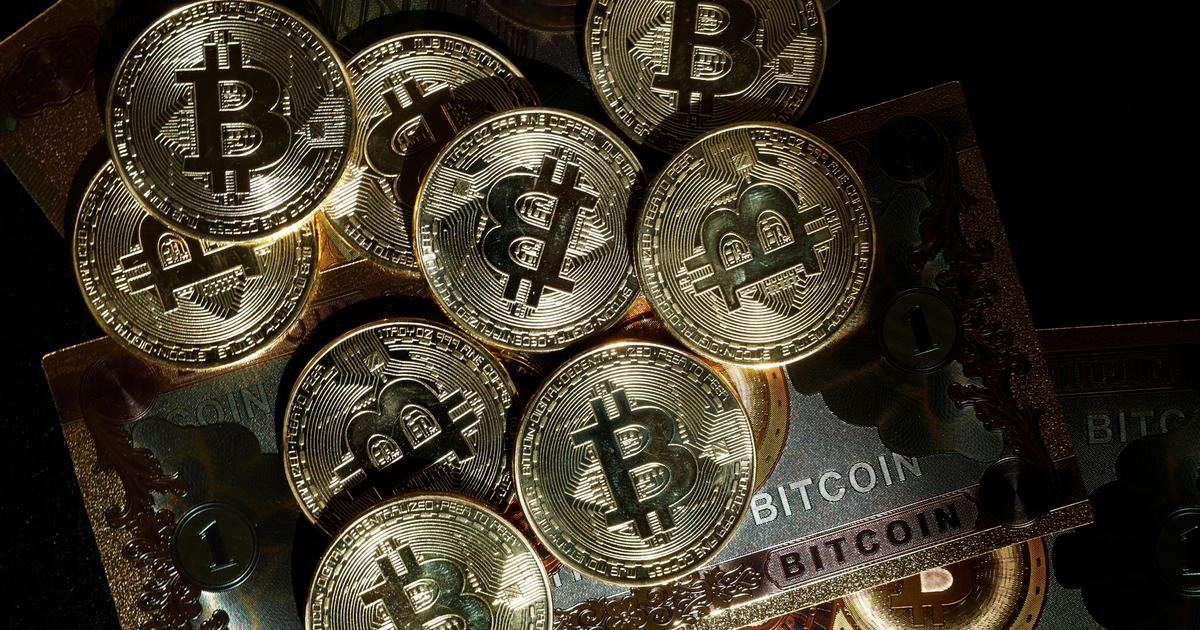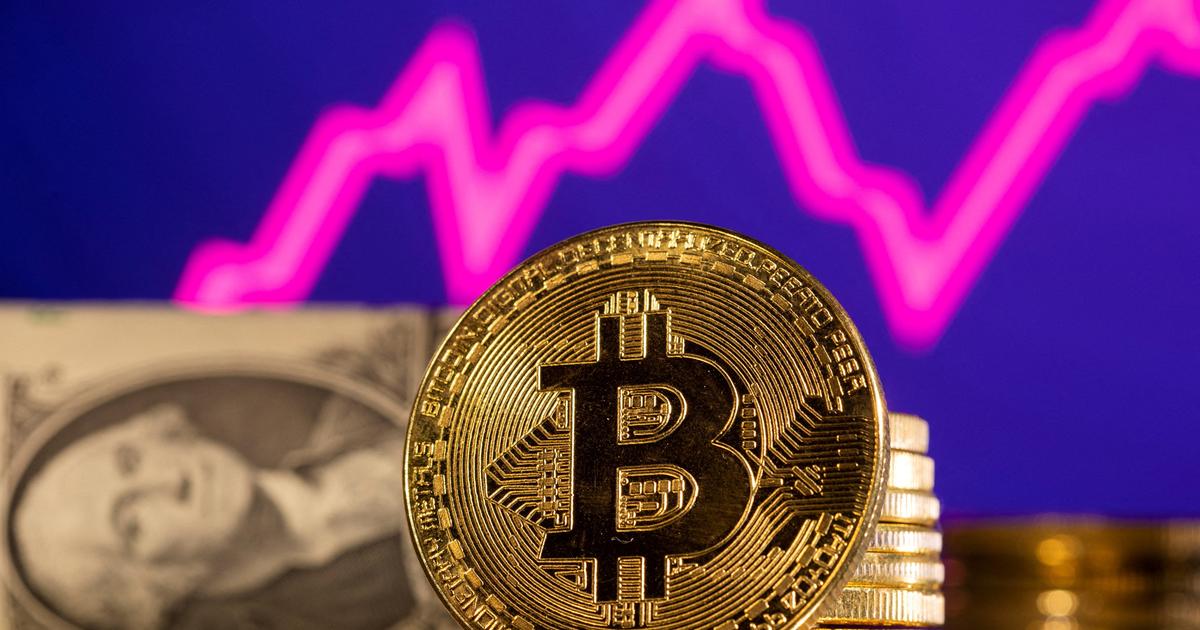Enlarge image
Bitcoin fair in the USA:
Cryptocurrencies will sooner or later develop their disruptive potential
Photo: CRISTOBAL HERRERA-ULASHKEVICH / EPA
Finally all this crypto mumbo-jumbo is going away.
The turbulence on the markets surrounding Bitcoin, Ether and crypto-related companies is currently being commented on in this way or something similar.
In fact, the two most important cryptocurrencies, Bitcoin and Ether, have lost between 70 and 80 percent since the all-time highs in early November, and some crypto assets have literally evaporated.
Of all things, the Terra USD, marketed as a stablecoin and linked to the US dollar, lost its entire market capitalization of 17 billion US dollars within a few days because investors panicked in reaction to a loss in value and the no longer so stable stablecoin as quickly as possible exchanged for other currencies.
A similar thing happened to unregulated crypto bank Celsius when it reported difficulties in paying off investors who wanted to withdraw their cryptocurrencies invested in Celsius.
BlockFi, a provider with a similar business model, also ran into trouble and had to be backed by crypto exchange FTX.
The hype on the market for Non Fungible Tokens (NFT) is apparently coming to an end.
For the first tweet by Twitter co-founder
Jack Dorsey
(45) only 270 US dollars were offered in April.
Just over a year earlier, Dorsey had sold the NFT for $2.9 million.
What's going on there?
And why now?
There doesn't necessarily have to be a specific reason for asset price bubbles to burst.
It's like a balloon: if you keep pumping it up, it will eventually burst – even without a needle.
However, there are quite a few needles in the crypto market that have contributed to investor nervousness escalating.
On the one hand, there is a general sense of insecurity caused by the Ukraine war and fears of recession.
In such an environment, risk aversion increases.
Crypto values are obviously one of the risky assets, especially from the perspective of traditional investors.
In uncertain times, these tend to sell off risk assets such as technology stocks, corporate bonds with below-average credit ratings and crypto assets.
In this respect, it is both a blessing and a curse that institutions from the established financial world have recently become increasingly involved in the crypto market.
Without their commitment, the prices of Bitcoin and Co. would probably not have risen so steeply in the past two years.
Now, however, they are probably the most important driver of the current downward trend, which runs more or less parallel to the price losses on the stock markets.
The most important cryptocurrencies in the world
Expand sectionBitcoin
Bitcoin is by far the oldest and best-known digital currency.
With currently around 60 percent, it also has the largest market share among the currently around 7000 cryptocurrencies.
Bitcoin was created during the 2008 financial crisis. To this day, its inventor is only known under an alias.
The most important features of bitcoin are its decentralized organization and the use of the
"blockchain"
database technology .
Both together ensure Bitcoin users a high degree of anonymity: Payments in Bitcoin are practically untraceable.
ExpandareaEther
Ether is the second largest digital currency in the world after Bitcoin.
Their market share is just over ten percent.
On the one hand, Ether is characterized by the equally decentralized organization of the underlying
Etherum
network .
On the other hand - and this is an important difference to Bitcoin - a focus of Ether is on "smart contracts".
These so-called smart contracts are basically small computer programs that can execute contracts almost automatically after the payment has been processed.
Similar to the blockchain database technology, smart contracts are predicted to have a great future.
ExpandareaTether
Tether is one of the "stable coins" whose value is guaranteed by backing it with classic investments.
In the case of Tether, the world's largest currency is the
US dollar
.
However, this violates an important idea of the cryptocurrency concept, namely independence from state institutions.
Nevertheless - or perhaps because of this - Tether is very popular.
One advantage of being linked to the US dollar is that the exchange rate fluctuates less than other digital currencies.
However, in recent years there have repeatedly been doubts as to whether the claimed US dollar cover is in fact true.
Expand area Diem (formerly Libra).
Facebook
's digital currency Libra is making a second attempt.
It is now called Diem – like the abbreviation for “Direct Messaging” (DM).
The planned storage location (wallet) is now called Novi instead of Calibra.
The core idea remains to make e-money as easy to send as e-mails.
The new stablecoins will no longer be based on a basket of currencies, but rather on individual currencies.
A diem dollar would be backed 1:1 by dollar reserves.
The Geneva Diem Association is now waiting for a license from the Swiss financial regulator.
Expand areaDigital-Yuan
China
has been working
on the digital version of its currency, the yuan or renminbi, for some time.
The project stands in clear contrast to the liberal ideas that the pioneers of digital currencies once had.
Because a state-uncontrolled, decentralized currency with anonymous payment transactions is certainly not what the political leadership of the People's Republic has in mind.
On the contrary, it should be more interested in checking payment transactions and related transactions as closely as possible.
The digital yuan can thus be seen as a kind of alternative to the original cryptocurrency Bitcoin.
Source: dpa-afx
In addition, the turnaround in interest rates initiated by almost all major central banks, which has also affected long-term yields on government bonds, plays an important role for many crypto investors.
At the time of negative interest rates, buying Bitcoin and Ether and their incredible price increases were a tempting alternative given the years of drought in traditional interest rate products.
Some investors were also blinded by the completely unrealistic interest rate promises made by some crypto providers.
Now that long-term Bunds are once again offering a positive nominal yield, the suffering is easing and investors are turning back to traditional financial products.
This is at the expense of the crypto assets.
Why the crypto principle remains indestructible
However, to conclude from this that the end of the entire sector is now being heralded is a fallacy.
Both the history and the benefits associated with the new blockchain technology give clear indications that crypto assets with all their facets not only have a future, but will also be able to develop their disruptive potential sooner or later.
First of all, one should not make the mistake of lumping together the different business models in the crypto world.
Bitcoin and Ether are based on highly decentralized blockchains and are therefore very robust in terms of their construction.
The coded protocols have incentive systems that make the respective blockchain almost unbreakable.
Of course, this does not rule out price fluctuations that reflect the value of the respective blockchain.
In contrast to Bitcoin and Ether, Terra USD and Celsius are centralized providers that have nothing to do with the concept of Decentralized Finance (DeFi) given the promise of annual returns of 18 percent and more.
The stablecoin Dai, a DeFi project par excellence,
How was the internet back then?
It should also be noted that even huge price losses in cryptocurrencies are nothing unusual.
In 2011, 2015, and 2018, the Bitcoin price declined by more than 80 percent each (from previous record levels).
Investors who have been in this market for some time are therefore quite relaxed despite the current bear market.
Historically, a comparison with the bursting of the dot-com bubble shortly after the turn of the millennium is appropriate, which also did not mean the death of all Internet values.
Measured against the technology-heavy Nasdaq, the price losses amounted to almost 80 percent, countless companies had to file for bankruptcy and disappeared.
But the Internet stayed, and even more: A few years later it really took off, digitization revolutionized the economy, and the rise of tech giants like Amazon, Facebook and Google began.
Nobel laureate
Paul Krugman
said in 1998: "By 2005 or so it will become clear that the impact of the Internet on the economy will not have been greater than that of fax machines."
How to proceed now
As long as the general risk aversion persists, the wheat will increasingly be separated from the chaff.
What will remain are decentralized cryptocurrencies with a good brand name and DeFi projects that deserve the name, i.e. are actually largely decentralized.
Unregulated centralized crypto exchanges will have a hard time surviving a coming crypto winter, as will unregulated stablecoins unless they are decentralized.
In addition, this crisis can prove to be extremely helpful because it mercilessly exposes the weaknesses of previous business models.
The surviving providers will learn from this and strengthen the robustness of their approaches.
At the same time, it can be expected that a new generation of providers will avoid the mistakes of their predecessors in the first place.
As a result, the DeFi sector will in all likelihood be able to increasingly exploit its advantages over the traditional financial world.
The intermediary function of many financial institutions is likely to become less important, and payment transactions could largely take place via decentralized networks.
Lending via decentralized providers that accept crypto assets as collateral is also likely to play a significant role in the future.
With the tokenization of assets, previously relatively illiquid assets such as real estate and works of art could become more tradable.
This would allow a broad segment of the population to invest in these assets at extremely low transaction costs.
Blockchain technology and the decentralized and regulated central business models derived from it will not disappear, but will emerge stronger from the crisis.
The established financial industry should not misunderstand this phase: Now is not the time to sit back and relax, but to actively help shape the future structure of the crypto sector.
Cyrus de la Rubia is a guest commentator for manager-magazin.de. Nevertheless, this column does not necessarily reflect the opinion of the editors of manager magazin.



/cloudfront-eu-central-1.images.arcpublishing.com/prisa/QLZQABDBZ5HQNGMWYSXWPVJXMY.JPG)











